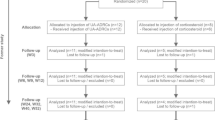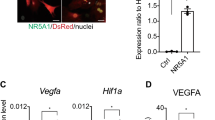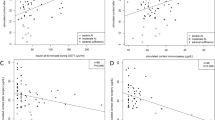Abstract
Teratology and genetic counselors are frequently asked whether very low exposures of drugs and chemicals can cause a child's congenital malformations. One critical factor on which the counseling is based is the dose. Because teratogenic effects follow a toxicologic dose-response curve with a no-effect dose, frequently counselors can refute a causal relationship because the dose was far below the no-observable-effect dose. Recently, some investigators have suggested that some teratogens which are present in physiologic levels such as cortisone, glucose, insulin, or sex steroids may contribute to the background incidence of congenital malformations and, therefore, there is no safe dose. Using corticosteroid-induced cleft palate in mice as the model, we conducted experiments to test this hypothesis. Adrenalectomy of A/J or CD-1 dams resulted in a reduction of endogenous corticosterone, but did not reduce the spontaneous incidence of cleft palate in the offspring. In A/J mice, the incidence of isolated cleft palate increased with adrenalectomy indicating that the spontaneous incidence of this defect is not due to endogenous corticosterone. Adrenalectomy did not affect the susceptibility of CD-1 mice to cortisone induced cleft palate demonstrating that endogenous corticosterone did not contribute significantly to the incidence of cleft palate induced by the exogenous corticosteroid. Finally, results in CD-1 mice clearly indicate that cortisone, like other teratogens, has a no-effect level for teratogenesis. These studies support the concept of a threshold in the dose-response relationship for corticosteroid-induced cleft palate in mice.
Similar content being viewed by others
Log in or create a free account to read this content
Gain free access to this article, as well as selected content from this journal and more on nature.com
or
Abbreviations
- p.c.:
-
postconception
- CP:
-
cleft palate
- CLCP:
-
cleft lip with cleft palate
- CL:
-
cleft lip
- PHT:
-
phenytoin
References
Beckman DA, Brent RL 1984 Mechanisms of teratogenesis. Annu Rev Pharmacol Toxicol 24: 483–500.
Wilson JG 1973 Environment and Birth Defects. Academic Press, New York
Gaylor DW, Sheehan DM, Young JF, Mattison DR 1988 The threshold dose question in teratogenesis. Teratology 38: 389–391.
Sheehan DM, Young JF, Slikker W, Gaylor DW, Mattison DR 1989 Workshop on risk assessment in reproductive and developmental toxicology: addressing the assumptions and identifying research needs. Regul Toxicol Pharmacol 10: 110–122.
Fraser FC, Fainstat TD 1951 Production of congenital defects in the offspring of pregnant mice treated with cortisone. Pediatrics 8: 527–533.
Fraser FC, Kalter H, Walker BE, Fainstat TD 1954 The experimental production of cleft palate with cortisone and other hormones. J Cell Comp Physiol 43: 237–259.
Hansen DK, Holson RR, Sullivan PS, Grafton TF 1988 Alterations in maternal plasma corticosterone levels following treatment with phenytoin. Toxicol Appl Pharmacol 96: 24–32.
Sullivan-Jones P, Hansen DK, Sheehan DM, Holson RR 1992 The effect of teratogens on maternal corticosterone levels and cleft incidence in A/J mice. J Craniofac Genet Dev Biol 12: 183–189.
Wilson JG 1965 Embryologic considerations in teratology. In: Wilson JG, Warkany J (eds) Teratology: Principles and Techniques. University of Chicago Press, Chicago, pp 251–261.
Barrow MV, Taylor WJ 1969 A rapid method for detecting malformations in rat fetuses. J Morphol 127: 291–306.
Rosenzweig S, Blaustein FM 1971 Cleft palate in CD-1 mice from restraint and deprivation of food and water. J Dent Res 50: 503
Spackman DH, Riley V 1978 Corticosterone concentrations in the mouse. Science 200: 87
Rosenzweig S 1966 Psychological stress in cleft palate etiology. J Dent Res 45: 1585–1593.
Rosenzweig S, Blaustein FM 1970 Cleft palate in A/J mice resulting from restraint and deprivation of food and water. Teratology 3: 47–52.
Barlow SM, McElhatton PR, Sullivan FM 1975 The relation between maternal restraint and food deprivation, plasma corticosterone, and induction of cleft palate in the offspring of mice. Teratology 12: 97–104.
Brown KS, Johnston MC, Murphy PF 1974 Isolated cleft palate in A/J mice after transitory exposure to drinking-water deprivation and low humidity. Teratology 9: 151–158.
Brown KS, Johnston MC, Niswander JD 1972 Isolated cleft palate in mice after transportation during gestation. Teratology 5: 119–124.
Barlow SM, Morrison PJ, Sullivan FM 1974 Plasma corticosterone levels during pregnancy in the mouse: the relative contributions of the adrenal glands and foetoplacental units. J Endocrinol 60: 473–483.
Hansen DK, Branham WS, Sheehan DM, Holson RR 1992 Embryotoxicity of phenytoin in adrenalectomized CD-1 mice. Proc Soc Exp Biol Med 199: 501–508.
Kalter H 1979 The history of the A family of inbred mice and the biology of its congenital malformations. Teratology 20: 213–232.
Kalter H 1968 Sporadic congenital malformations of newborn inbred mice. Teratology 1: 193–200.
Hackman RM, Brown KS 1972 corticosterone-induced isolated cleft palate in A/J mice. Teratology 6: 313–316.
Fraser FC 1976 The multifactorial/threshold concept-uses and misuses. Teratology 14: 267–280.
Hansen DK, Hodes ME 1983 Comparative teratogenicity of phenytoin among several inbred strains of mice. Teratology 38: 175–179.
Harbison RD, Becker BA 1970 Studies on the mechanism of diphenylhydantoin teratogenicity. Toxicol Appl Pharmacol 17: 273–274.
Blaustein FM, Feller R, Rosenzweig S 1971 Effect of ACTH and adrenal hormones on cleft palate frequency in CD-1 mice. J Dent Res 50: 609–612.
Leifer C, Chaudhry AP, Miller R 1968 Effects of exogenous adrenocoricotropic hormone on palatogenesis in A/Jax mice. J Dent Res 47: 843
Heiberg K, Kalter H, Fraser FC 1959 Production of cleft palates in the offspring of mice treated with ACTH during pregnancy. Biol Neonat 1: 33–37.
Author information
Authors and Affiliations
Rights and permissions
About this article
Cite this article
Fawcett, L., Buck, S., Beckman, D. et al. Is There a No-Effect Dose for Corticosteroid-Induced Cleft Palate? The Contribution of Endogenous Corticosterone to the Incidence of Cleft Palate in Mice. Pediatr Res 39, 856–861 (1996). https://doi.org/10.1203/00006450-199605000-00019
Received:
Accepted:
Issue date:
DOI: https://doi.org/10.1203/00006450-199605000-00019



